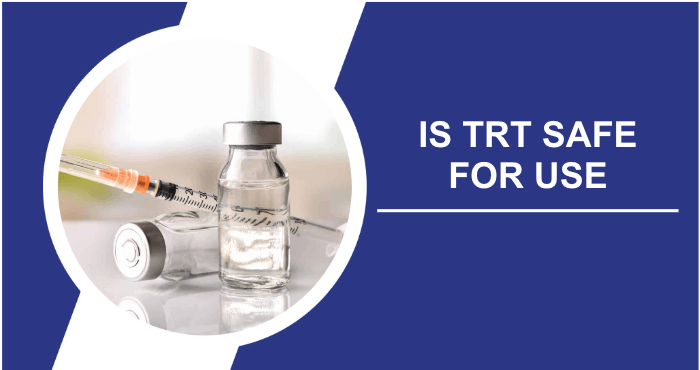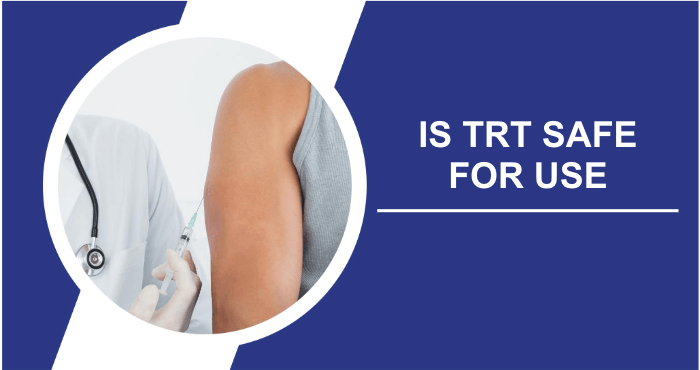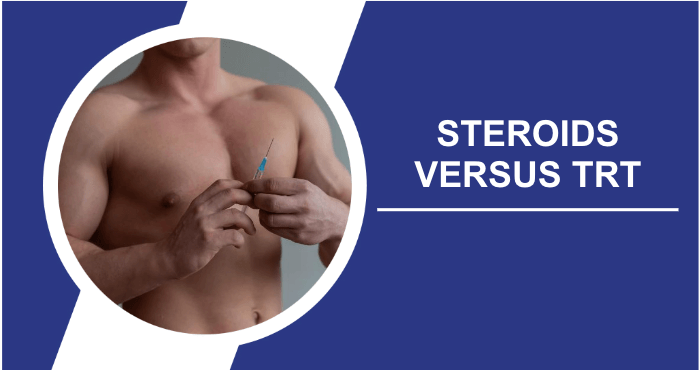Men today experience consistently low levels of testosterone, resulting in decreased strength and virility compared to previous generations. A common approach to combat this testosterone deficiency is to administer injections, a medical procedure designed to restore hormone levels. But what are the consequences of not delivering testosterone directly into the muscle? Read on to find out how to prevent this from happening.
Testosterone Deficiency in Men In modern times, male testosterone levels have reached historically low levels, affecting strength and virility. Injecting testosterone into the muscle is a common approach to correcting this deficiency and restoring hormonal balance. Learn more about the importance of proper injection techniques to ensure effective treatment.
What Is Testosterone Actually?
Testosterone is like the body’s energy manager, overseeing muscle growth, bone density, and even mood swings. It’s the hormone responsible for deepening voices and sprouting facial hair during puberty, but it plays a role throughout life, influencing everything from confidence to libido. Think of it as your body’s silent motivator, working quietly behind the scenes to keep you feeling strong and energetic.
What Is The Role Of Testosterone In Our Bodies?
Testosterone is the unsung hero of our bodies, orchestrating a symphony of physical and emotional changes. It’s the driving force behind muscle development, keeps our bones strong, and even affects our mood and cognition. During puberty, it’s like a conductor directing the transformation of boys into men, deepening voices and sprouting facial hair.
Beyond puberty, it’s the quiet influencer, affecting confidence, motivation, and even our sex drive. Think of testosterone as the subtle but essential guardian of our vitality, always working in the background to keep us physically and emotionally resilient.
- Accurate testosterone measurement
- Appointment with a doctor
- Cream and injection options
- Price: $35 – $199
- Rating ⭐⭐⭐⭐⭐
Teststosterone Injection Methods
Testosterone Replacement Therapy (TRT) offers a variety of injection methods that are tailored to individual preferences, medical needs, and treatment plans. Here are the most common methods:
Intramuscular (IM) Injections
- Site of administration: Typically injected into the gluteal muscle (buttock) or thigh muscle.
- Frequency: Administered less frequently, usually every one to two weeks.
- Release Rate: Provides sustained release of testosterone into the bloodstream, maintaining stable levels.
Subcutaneous Injection
- Site of administration: Injected into the fat layer just under the skin.
- Frequency: Similar to intramuscular injections, administered every one to two weeks.
- Release Rate: Provides a steady and consistent release of testosterone, similar to intramuscular injections.
Testosterone Cypionate Injections
- Formulation: Common injectable testosterone with a slower release rate.
- Frequency: Typically administered every 7 to 14 days.
- Benefits: Known for its stable and long-lasting effects, requiring less frequent injections.
Testosterone Enanthate Injections
- Formulation: Similar to cypionate, known for its longer-acting properties.
- Frequency: Typically administered every 7 to 14 days.
- Benefits: Provides sustained release of testosterone, requiring less frequent injections.
Testosterone Propionate Injections
- Formulation: Has a more rapid onset of action compared to cypionate and enanthate.
- Frequency: Requires more frequent injections, often every 1 to 3 days.
- Benefits: Allows for faster onset of action and precise control of testosterone levels.
Testosterone Undecanoate Injections
- Formulation: Comes in a long-acting formulation.
- Frequency: Administered less frequently, typically every 10 to 14 weeks.
- Benefits: Suitable for individuals who desire less frequent injections and a longer duration of action.
Pellet Implants
- Administration: Testosterone pellets are implanted under the skin, usually in the hip or buttock area.
- Duration: Provides a slow and continuous release of testosterone over several months.
- Benefits: Eliminates the need for frequent injections and provides a convenient, long-term solution.
Why Choose Testosterone Injections?

Testosterone injections are a multifaceted medical intervention with multiple purposes, all aimed at correcting testosterone deficiency and optimizing hormonal balance. Here are both medical and non-medical reasons for choosing testosterone injections:
- Correcting Hormonal Imbalances: Testosterone injections are a primary means of correcting hormonal imbalances, especially in individuals struggling with testosterone deficiency. This deficiency can lead to several health problems, including fatigue, decreased libido, and loss of muscle mass.
- Anabolic effects: Athletes and bodybuilders often opt for testosterone injections to take advantage of its anabolic properties, which stimulate muscle protein synthesis, resulting in increased muscle growth and strength.
- Cognitive Benefits: Testosterone plays a critical role in cognitive function. Injection therapies are used to combat cognitive decline associated with low testosterone levels, thereby improving mental clarity and focus.
- Revitalizing sexual health: Injections can revitalize libido, improve erectile function, and address issues related to sexual performance.
- Boost energy levels: Low testosterone levels are often associated with fatigue and mood swings. Testosterone injections can increase energy levels, reduce fatigue, and stabilize mood.
- Bone health: Testosterone helps build bone density. Injections are used to prevent osteoporosis and maintain skeletal health, especially in aging individuals prone to bone-related problems.
- Medical applications: In addition to treating testosterone deficiency, injections are used to treat certain medical conditions such as delayed puberty, certain forms of anemia, and breast cancer in women.
Which Is Better: Intramuscular Or Subcutaneous Injections
The choice between intramuscular and subcutaneous testosterone injections for testosterone replacement therapy (TRT) depends on several factors, including patient preference, medical considerations, and therapeutic goals. Here’s a comparison of the two methods:
Administration Site
- Intramuscular testosterone injections: Administered deep into muscle tissue, usually in the gluteal (buttock) or thigh muscles.
- Subcutaneous injections: Injected into the fatty tissue just under the skin.
Needle Size And Depth
- Intramuscular testosterone injections: Usually requires a longer needle to reach the muscle.
- Subcutaneous testosterone injections: Often use a shorter, smaller needle because they don’t need to go deep into the muscle.
Frequency Of Injections
- Intramuscular injections: Administered less frequently, usually every one to two weeks.
- Subcutaneous injections: Similar to IM, typically every one to two weeks.
Release Rate And Stability
- Intramuscular injections: Provide a sustained release of testosterone into the bloodstream, maintaining stable levels.
- Subcutaneous injections: Provide a steady and consistent release of testosterone, similar to IM injections.
Pain And Discomfort
- Intramuscular injections: Some individuals may experience discomfort due to the deeper injection into muscle tissue.
- Subcutaneous injections: Generally associated with less pain because the injection is made into the fatty layer under the skin.
Absorption Rate
- Intramuscular injections: Testosterone is absorbed into the bloodstream relatively quickly.
- Subcutaneous injections: Absorption rate is slightly slower than IM, but still effective.
Individual Preferences
- Intramuscular injections: Preferred by individuals who are used to or comfortable with deeper injections.
- Subcutaneous injections: Preferred by those seeking a less invasive injection method.
Adjustability And Precision
- Intramuscular injections: May provide more precise control over dosage adjustments.
- Subcutaneous injections: Offer flexibility and ease of dose adjustment.
- Accurate testosterone measurement
- Appointment with a doctor
- Cream and injection options
- Price: $35 – $199
- Rating ⭐⭐⭐⭐⭐
What Happens If The Testosterone Is Not Injected Into The Muscle?
If testosterone is injected incorrectly and misses the intended muscle, several complications can occur, including the risk of puncturing blood vessels and nerves, as well as the potential for infection at the injection site. Here are the key points:
- Damage to blood vessels and nerves: Incorrect injections can cause the needle to puncture blood vessels, resulting in the formation of a hematoma – an accumulation of blood that causes swelling, pain, and discoloration.
- Nerve injury: Accidental nerve puncture may result in nerve damage, causing tingling, numbness, or weakness in the affected area.
- Infection Risk: Introduction of bacteria: If the injection bypasses the muscle and enters the surrounding tissue, there is an increased risk of introducing bacteria into the area, potentially leading to localized infections.
- Cellulitis: Infections in the subcutaneous tissue can lead to cellulitis, a bacterial skin infection characterized by redness, swelling, and warmth at the injection site.
- Localized Inflammation and Pain: The body’s inflammatory response to the misplaced injection may cause pain, redness, and swelling at the injection site.
- Absorption rate: Injections that miss the muscle can alter the rate of absorption of the injected substance, affecting the effectiveness of the medication and possibly causing hormone level imbalances.
Injecting Testosterone Directly Into The Bloodstream
Injecting testosterone directly into the bloodstream is not a standard or recommended method of administration. However, if testosterone were accidentally injected directly into the bloodstream, several potential problems could occur:
- Rapid absorption: Direct injection into the bloodstream would result in rapid absorption of testosterone, causing an immediate spike in hormone levels.
- Undercontrolled hormone levels: Rapid increases in testosterone levels can lead to hormonal imbalances, potentially causing side effects such as mood swings, acne, or aggression.
- Cardiovascular effects: Elevated testosterone levels may have cardiovascular effects, affecting blood pressure and increasing the risk of cardiovascular events.
- Liver metabolism bypass: Testosterone injected into the bloodstream may bypass the metabolic processes of the liver, potentially affecting liver workload and function.
- Increased risk of side rffects: The risk of side effects and complications may be higher when testosterone is injected directly into the bloodstream.
- Potential health risks: Injecting substances directly into the bloodstream carries inherent risks, including the possibility of infection, embolism, or other serious complications.
Safe Testosterone Injection
Safety during testosterone injections is paramount to achieving optimal results and minimizing potential risks. Follow these guidelines:
- Sterile environment: Maintain a sterile and hygienic environment. Thoroughly clean your hands and use sterile equipment, including needles and vials.
- Appropriate needle size: Choose the proper needle size for intramuscular injections. Use thicker needles (22-25 gauge) for drawing up testosterone and slightly thinner needles (25-27 gauge) for the actual injection.
- Injection site: Target larger muscle groups such as the gluteal muscles or outer thigh. Rotate the injection sites to avoid damaging surrounding tissue.
- Aspiration: Before injecting, aspirate by gently pulling back on the syringe plunger to verify that the needle is not in a blood vessel. If blood is observed, reposition the needle.
- Injection speed: Administer the injection slowly to minimize discomfort and reduce the risk of tissue trauma.
- Posti-injection massage: Gently massage the injection site after injection to enhance absorption and reduce potential discomfort.
- Proper sharps disposal: Dispose of needles and syringes in a puncture-resistant container according to local regulations. Do not attempt to recapped needles.
- Ongoing monitoring and follow-up: Continually monitor for signs of infection, such as redness, swelling, or unusual pain at the injection site. Seek medical advice if you have any concerns.
- Consult a healthcare professional: Always consult a healthcare provider for guidance on injection technique, frequency, and dosage. Individual needs may vary, and professional guidance will ensure the safe and effective administration of testosterone.
Reduce Risk With Professional Administration
Choosing to have testosterone injections administered by a healthcare professional is a safer alternative to self-administration. Fountain TRT, a leader in testosterone replacement therapy, offers a convenient and safe solution. Here’s what makes Fountain TRT different:
- Online doctor consultations: Fountain TRT offers online doctor visits to streamline the evaluation process. Men can receive a personalized evaluation to determine if TRT injections or a topical cream is the better option.
- Expert guidance: Founded by Dr. Doron Stember, a board-certified urologist with over a decade of experience, ensures access to specialized evaluation and education, according to Fountain TRT reviews. Dr. Stember emphasizes the transformative impact that treating Low T can have on men’s lives.
- Low T evaluation: Fountain TRT’s Low T assessment takes approximately two minutes, providing a quick and efficient way to begin the evaluation process.
- Topical cream alternative: Fountain TRT offers a topical cream as an alternative to injections, making treatment more accessible. This cream is applied every morning, providing a needle-free and hassle-free experience.
- Symptom relief: Fountain TRT addresses a wide range of symptoms associated with Low T, including increased body fat, fatigue, decreased sex drive, erectile dysfunction, decreased muscle mass, and more.
- Fast and convenient process: The TRT process with Fountain is quick, easy, and conducted online. It involves completing an assessment, taking a blood test, scheduling a video visit with a Fountain doctor, and receiving the prescribed treatment at your doorstep.
- Discreet delivery: Fountain TRT provides discreet and convenient delivery of testosterone treatment to your door each month. The topical cream applied to the shoulder area provides a needle-free solution.
- Comprehensive benefits: Whether through injections or topical cream, Fountain TRT helps men build muscle, lose excess fat, improve sexual function, enhance mental clarity and motivation, increase energy levels, and regain a sense of youth.
Choosing Fountain TRT, the best online TRT clinic, means choosing a comprehensive, expert-led solution to Low T, accompanied by the convenience of online access and the choice of a topical cream for those who prefer to avoid injections.
- Accurate testosterone measurement
- Appointment with a doctor
- Cream and injection options
- Price: $35 – $199
- Rating ⭐⭐⭐⭐⭐
Alternatives To Testosterone Injections
When considering alternatives to testosterone replacement therapy (TRT) injections, there are several options to explore, including transdermal patches, topical gels, buccal patches, and pellet implants. Transdermal patches adhere to the skin and gradually release testosterone. While they provide a consistent release of testosterone, some users may experience skin irritation.
Topical gels are applied to the skin and absorbed by the body. They are convenient to use, but carry the risk of unintentional transfer to others. Buccal patches are applied to the gums and offer an alternative to skin application, but may cause gum irritation. Pellet implants involve the insertion of small pellets containing testosterone under the skin. They provide long-lasting effects but require a minor surgical procedure.
How Can I Increase My Testosterone Levels Naturally?
Boosting testosterone levels naturally means adopting a healthy lifestyle. Regular exercise, especially weight training and high-intensity exercise, can stimulate testosterone production. A balanced diet rich in nutrients such as zinc, vitamin D, and omega-3 fatty acids supports hormonal health. Adequate sleep and stress management are also important, as chronic stress can lead to testosterone decline.
Maintaining a healthy weight and limiting alcohol consumption also contribute to hormonal balance. In addition, maintaining social connections and engaging in activities you enjoy can have a positive impact on mood and confidence, which indirectly affects testosterone levels. By prioritizing these holistic approaches, you can naturally support your body’s testosterone production.
Are There Any Supplements To Increase Testosterone Levels?
Yes, there are supplements marketed as testosterone boosters, but their effectiveness can vary and caution is advised. Some popular options include fenugreek, D-aspartic acid, and ashwagandha. However, it’s important to approach these supplements with skepticism and consult a health care professional before using them.
Lifestyle factors such as regular exercise, a balanced diet, and adequate sleep may have a greater impact on maintaining healthy testosterone levels. While supplements can provide some support, there’s no magic pill to boost testosterone. A holistic approach to overall health is often the most reliable strategy for maintaining hormonal balance.
Frequently Asked Questions
What are testosterone injections for and why are they used?
Testosterone injections are the medical practice of injecting synthetic or bioidentical testosterone into the body, primarily to treat conditions such as hypogonadism, where the body does not produce testosterone naturally.
How can I determine if I need testosterone injections?
It is advisable to consult a healthcare professional who will assess your symptoms and perform blood tests to determine if you have low testosterone levels. Common indicators of low testosterone include fatigue, decreased libido, muscle weakness, and mood changes.
Are there alternatives to testosterone injections to boost testosterone levels?
There are indeed alternative approaches, including testosterone gels, patches, and oral medications. The choice of treatment depends on individual preferences, medical history, and the guidance of your healthcare provider.
Are testosterone injections considered safe?
In general, testosterone injections are considered safe when administered under the supervision of a healthcare professional. However, they can cause adverse effects and should only be used under the direction of a healthcare professional.
What are the possible side effects of testosterone injections?
Possible side effects include acne, mood swings, hair loss, increased red blood cell count, and in certain cases, cardiovascular risks. Your healthcare provider will monitor your treatment to reduce these potential risks.
Conclusion
In conclusion, it’s important to avoid skipping testosterone injections as this can lead to serious complications. To ensure the safety and efficacy of your TRT treatments, we strongly recommend that you either seek the assistance of a medical professional for injections or explore alternative methods.
Among the top online TRT clinics, our first choice is FountainTRT. Fountain TRT offers a comprehensive service, complete with a topical cream that eliminates the need for injections. Why not give it a try for a more convenient and hassle-free TRT experience? Your health and well-being are worth the investment.
Sources
- Testosterone replacement therapy and cardiovascular disease. DOI: 10.1038/s41443-021-00516-6 Read more
- Effects of Testosterone Supplementation for 3 Years on Muscle Performance and Physical Function in Older Men. DOI: 10.1210/jc.2016-2771 Read more
- Medicinal Use of Testosterone and Related Steroids Revisited. DOI: 10.3390/molecules26041032 Read more
- Testosterone supplementation. DOI: 10.1016 Read more



















